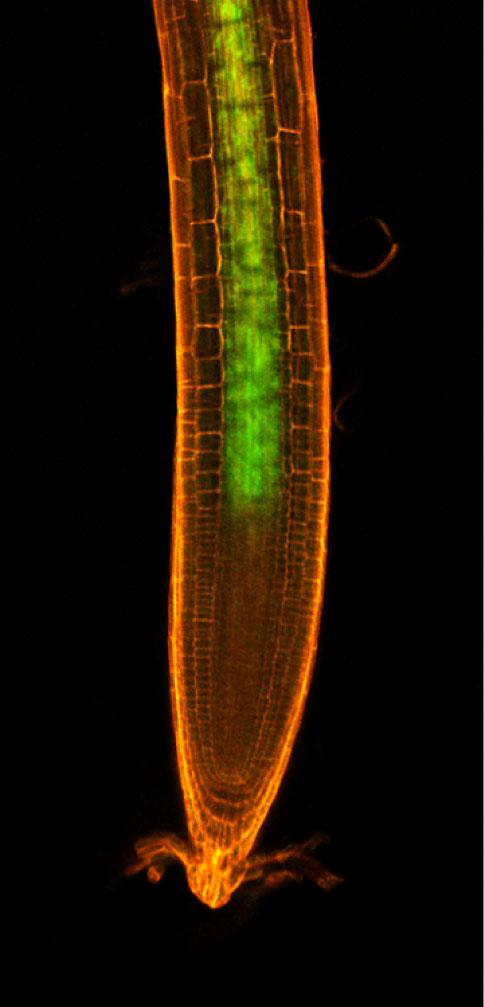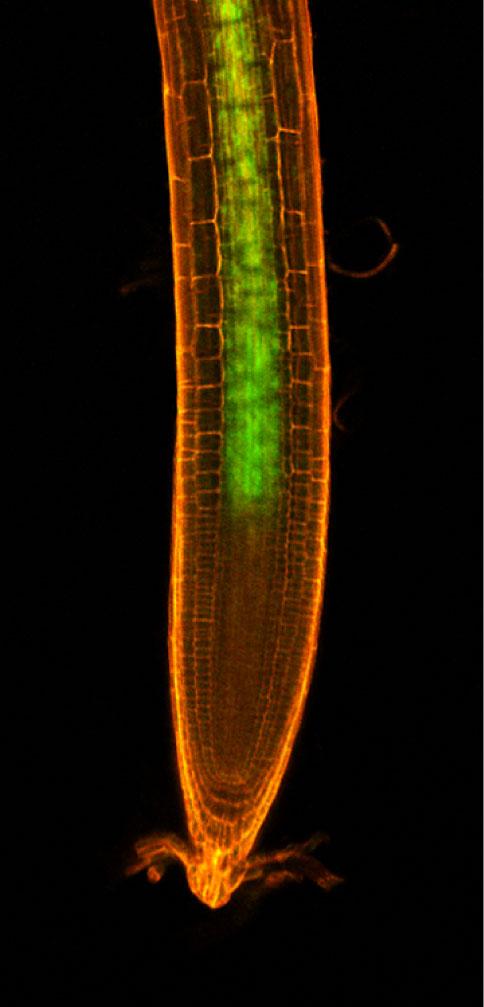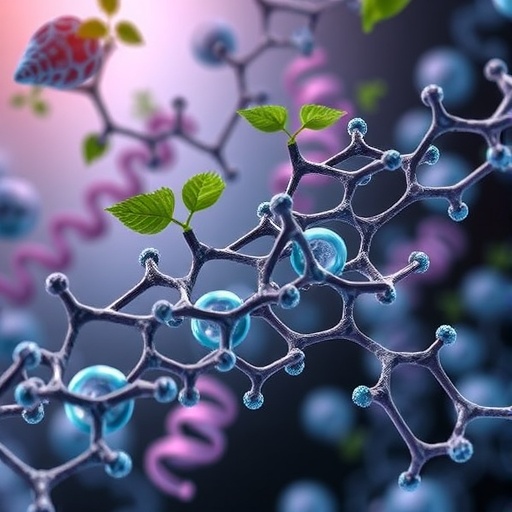
Credit: Yoshikatsu Matsubayashi
Nagoya, Japan – Although not able to actively forage for their food, plants can nevertheless overcome problems relating to nutrient scarcity or varied distribution using a long-distance signaling mechanism. This helps determine their competitive success and productivity. For instance, nitrogen (usually in the form of nitrate) is essential for plant growth, but is often only present as patches in the soil. Nitrogen-starved roots express a mobile plant hormone (CEP) that travels upward to the shoot and eventually triggers compensatory nitrogen uptake by roots in more nitrogen-rich areas. This CEP signal is received by a receptor protein in the leaves, but the molecules involved in the shoot-to-root response signal were unknown.
Nagoya University research has now revealed that phloem-specific polypeptides (chains of amino acids) are activated in response to the CEP signal, and switch on the expression of a nitrate transporter gene only when nitrate is present in the soil immediately surrounding the root. The study was reported in Nature Plants.
To identify the gene(s) switched on when the CEP receptor is activated, researchers screened genetic candidates that were highly upregulated following treatment of the model plant Arabidopsis with CEP.
Two genes matching this description and also regulated by the nitrogen status of the roots were discovered to encode polypeptides that the team named CEPD1 and CEPD2 for CEP downstream 1 and 2, respectively.
The team showed that these polypeptides accumulated in the roots, although the genes encoding them were expressed only in the shoots. This indicated that the polypeptides act as mobile descending shoot-to-root signals.
Plants were then grown with their roots separated into two parts, each receiving different levels of nitrogen, to explore the roles of CEPD1 and CEPD2. "Roots exposed to nitrogen-rich medium showed increased expression of a nitrate transporter gene," co-first author Yuri Ohkubo says. "However, mutant plants in which CEPD1 and CEPD2 genes were switched off showed no such activation of the nitrate transporter."
CEPD polypeptides were detected at similar quantities in both nitrogen-rich and nitrogen-starved roots. However, they only switched on the nitrate transporter gene on the nitrogen-rich side of the plant. "The plant response to a lack of nitrogen therefore depends on the availability of nitrate in the soil surrounding its roots," corresponding author Yoshikatsu Matsubayashi says. "The extent of this nitrate availability ultimately determines if CEPD activates the nitrate transporter gene."
Such a sophisticated signaling system ensures that plants maximize the efficiency at which they obtain nutrients, and could be exploited to improve fertilizer application and enhance plant productivity.
###
The article "Shoot-to-root mobile polypeptides involved in systemic regulation of nitrogen acquisition" was published in Nature Plants at DOI: 10.1038/nplants.2017.29
Media Contact
Koomi Sung
[email protected]
http://www.nagoya-u.ac.jp/en/
############
Story Source: Materials provided by Scienmag





